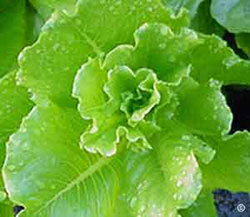Leafy vegetables don’t have extensive root systems. Therefore, gardeners must be concerned with the condition of the top six inches of soil. For best results, add one and one-half inches of compost to the soil, and work it in well to a depth of six inches. Vegetables require high nitrogen levels, so have soil tested and follow the manufacturer’s recommendations when fertilizing your vegetable crop. To maintain healthy plants, keep the soil well watered throughout the season to a depth of at least six inches.

Leaf-crop seeds come in all different shapes and sizes. It’s a good rule to plant seed to a depth follwing seed package directions, and keep the surface of the soil moist until the seedlings emerge. Plant two or three seeds for each plant desired. Once the seedlings emerge and are about three inches tall, they should be thinned. Remove the smallest seedlings, and every few inches, leave in place one large, healthy plant.
Weeds, insects, and disease pests are found wherever gardens are planted, but weeds can be removed with a hoe or by hand. Remove the affected leaf or plant if a disease is present, and control insects by picking or washing them off the plant. Remember that you and your family will be eating the foliage, so if possible, avoid using insecticides or fungicides. If insect populations get out of control, use an insecticidal soap.
For more information, see the following Colorado State University Extension fact sheet(s).



